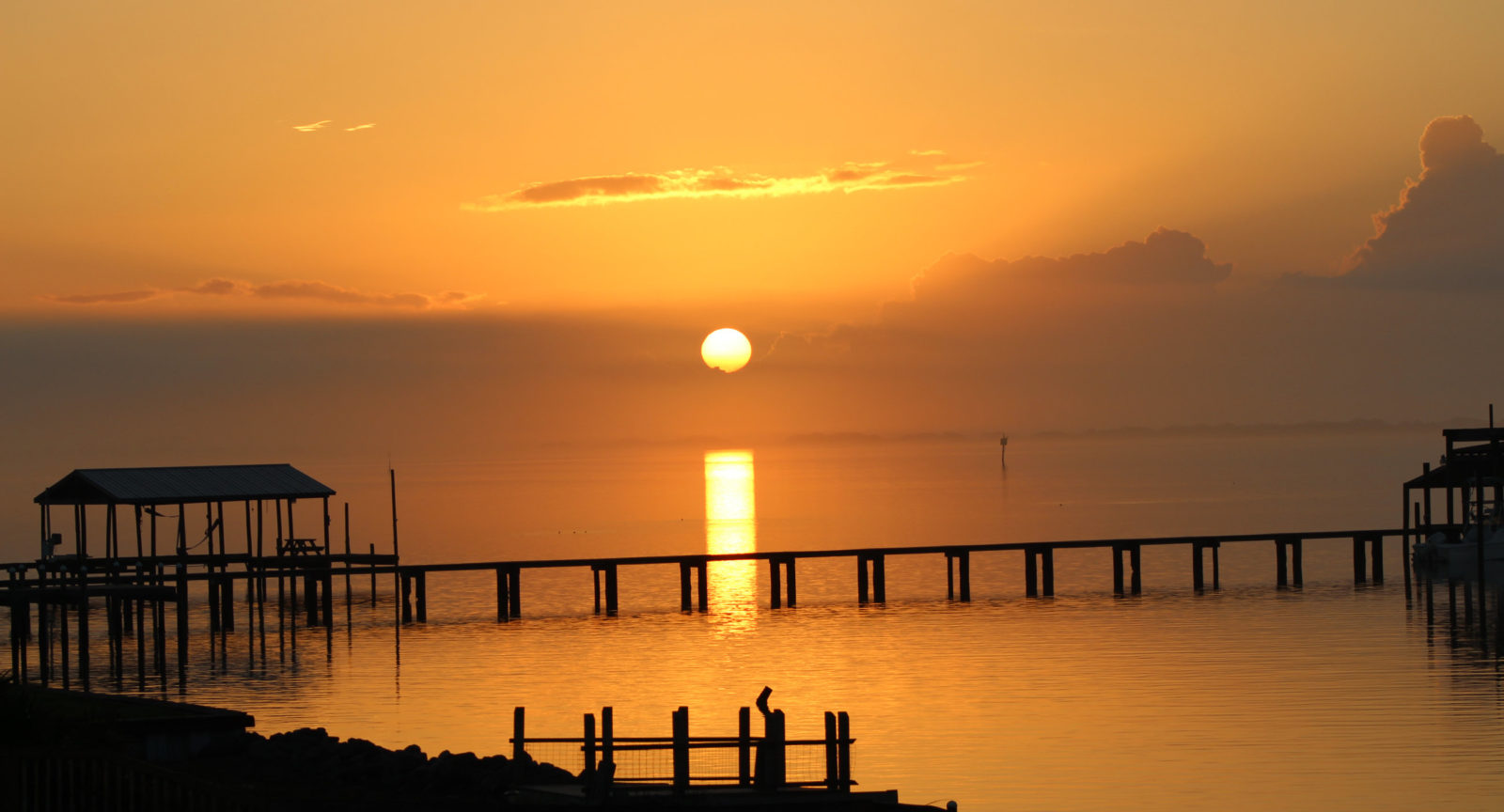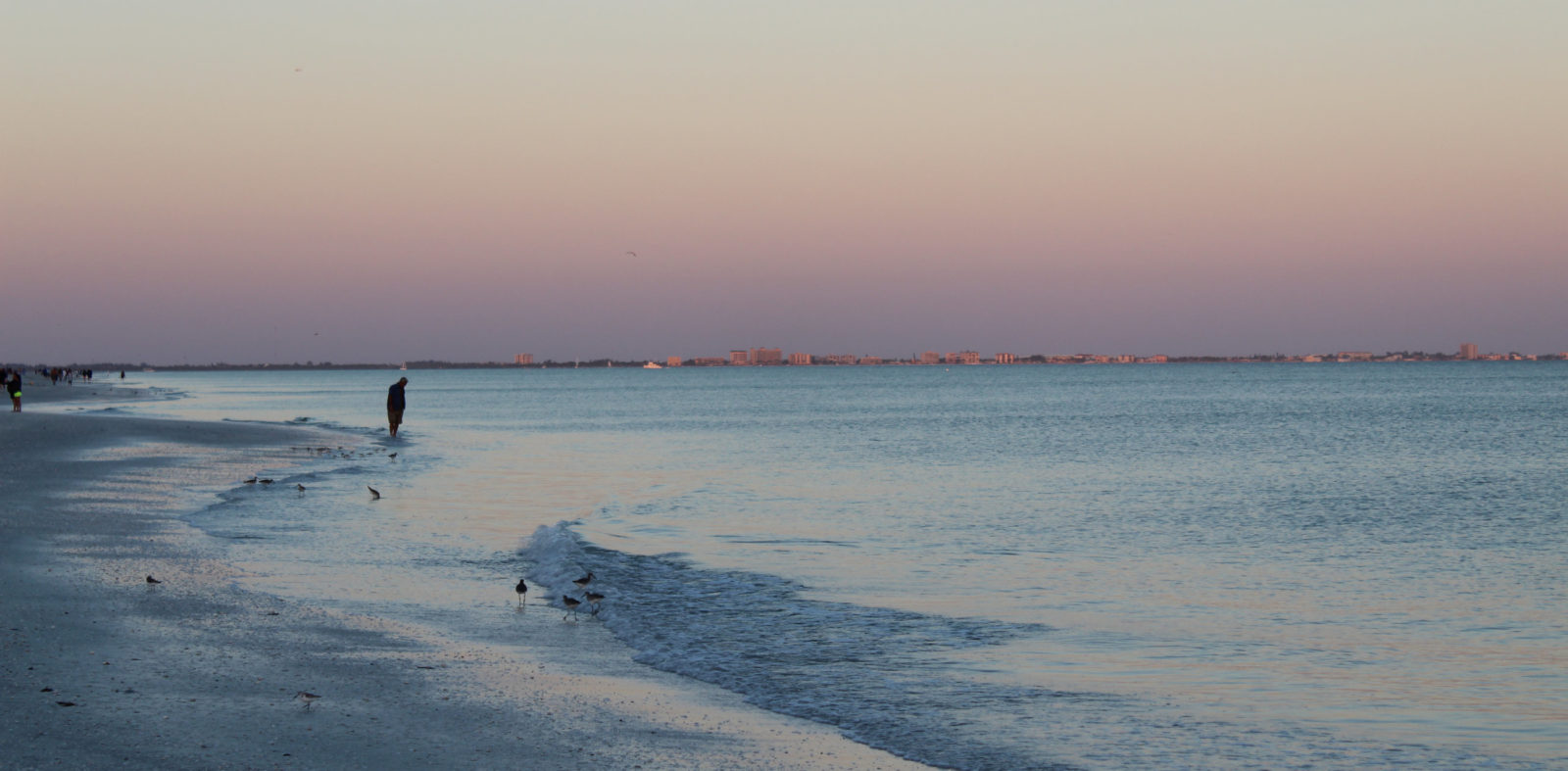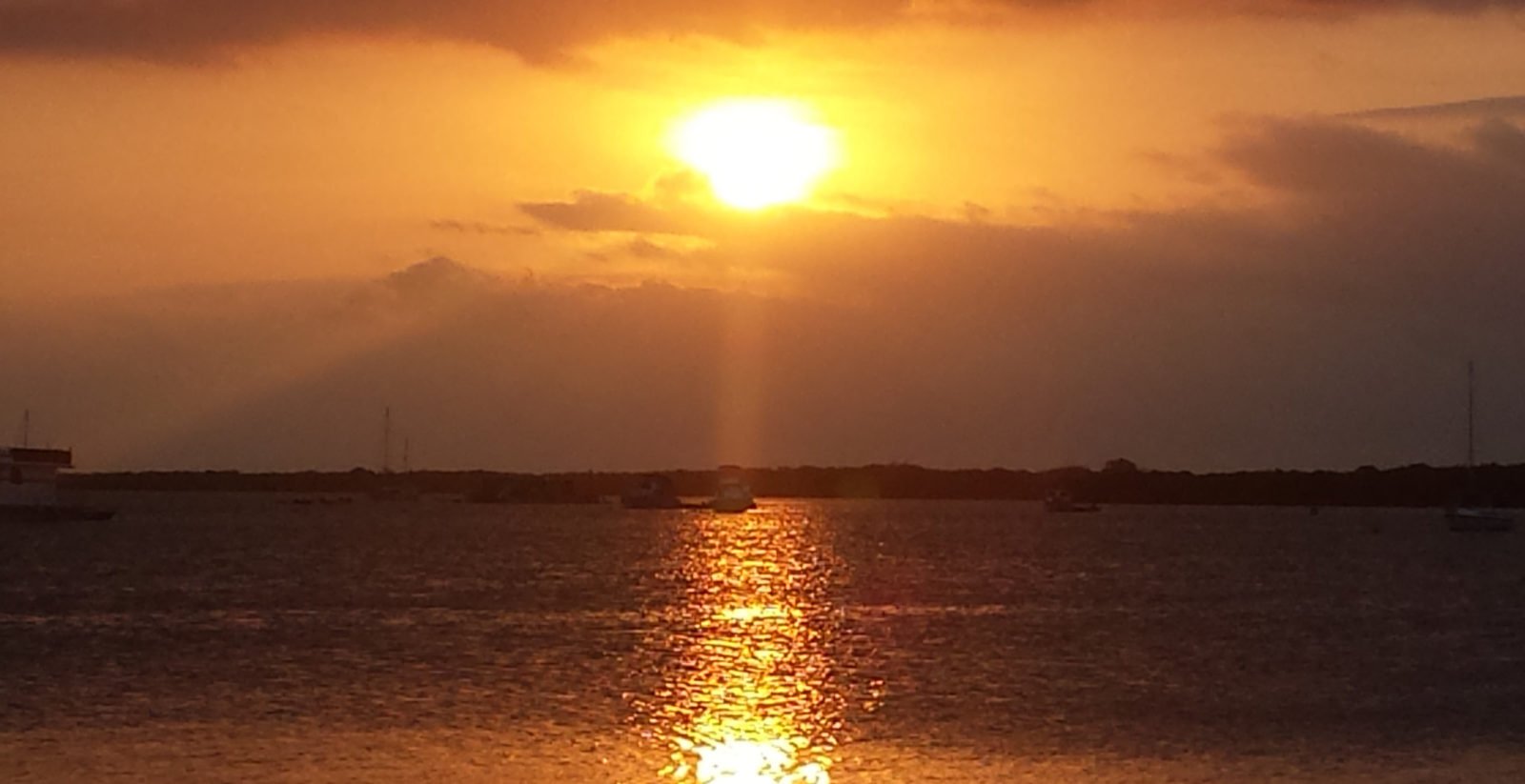Editor’s Note: This post is written by a member of LTV’s sponsored content team, The Leisure Explorers. Do you own a Leisure Travel Van and enjoy writing? Learn more about joining the team.
Sitting in the RV at the end of the driveway, Jim asked, “Where to?” This has been a dream come true. For so many years, we longed for a way to travel comfortably and at our own pace. An RV was the perfect choice to make that happen, and when we retired, time became an ally instead of an enemy! Over the past six years, we have covered a lot of asphalt between Maine, the Keys, and west to Idaho. We have experienced remarkable landscapes from prairies and mountains to coastal cities, and though there is so much more to see, the seaside always beckons us home.
Raised on the Jersey Shore, Jim and I have great affection for the coast. So, when we purchased our Unity, our plan was to enjoy beach after beach along the Eastern and Gulf coasts. It is a continuing quest in our RV travel. So when Jim asks, “Where to?” I inevitably answer – “The coast.” Now, you may think that is rather mundane or unimaginative, but if you are a beach person, you are already picturing the sea, sand, and the sunny breeze of a summer’s day. While beaches all seem the same to some, we have found that each sandy stretch has something unique to offer. After sampling dozens of beaches, we have a few favorites, so buckle up and join us on a winter trip to explore some of our favorite beaches.
Winter is cold in Atlanta, where we call home these days. Not “northern cold” like in our original home of New Jersey, but cold nonetheless. Natives tell us that our blood has thinned after 35 years in the South, so we feel the cold more intensely than we once did. I don’t know if there is any truth, but a cold rainy day in January is not pleasant, no matter how thick or thin your blood is. We needed some warmer weather, so we planned a trip to the Keys.
The Keys are a pretty fair distance from Atlanta, so we needed to find a few coastal stops along the way. That meant this would be a beach trip! The only “hiccup” is that it is snowbird season in Florida, and every RV campground is packed with folks fleeing the cold. We’ll have to rely on cancellations and good luck in finding campsites. To ensure better luck, we started on the Florida Panhandle. February and March have “iffy” weather on the Gulf. It can be freezing and windy or absolutely balmy. It’s a roll of the dice we were willing to risk, so we pointed the RV southwest to Pensacola.

View of the bay from our campsite at Emerald Beach in Navarre
I scored a campground in Navarre, just about an hour from Pensacola, that served as home base for this western-most part of the trip. Emerald Beach is a small private campground that sits on the bay. It has a small beach, a fishing pier, and wonderful sites overlooking the water – they even have decks! Navarre Beach and the Gulf Islands National Seashore were situated near the bridge to the barrier island. We were just a short drive away from these beautiful white sands, and this was our primary destination for this stop.
The next morning we set out for Navarre Beach. The road along the beach is flanked by hotels, condos, and beach house rentals for several miles, but as you come to the end of Navarre Beach, all the development disappears. The road is narrowed by sand, and a sign announces the Gulf Islands National Seashore. Beyond is nothing but sand dunes spiked with beach grass and beautiful turquoise waters. The sand is fine and white – “sugar sand,” as our host put it, and indeed it has that same texture. The waters are clean and clear turquoise in color when the sun is bright and seem to hold their color even as the clouds move in.

Beautiful white sand beach at Gulf Islands National Seashore at the Santa Rosa Day Use Area
After a night of storms, mobs of jellyfish are washed up on the beach. They were quite large – about the size of a grapefruit, with multi-colored sails and tentacles. A few young seabirds picked at smaller jellies but stepped gingerly around the larger specimens – as did we! Quite an unusual “litter” problem. At this time of year, the National Seashore is deserted. We found a parking lot next to the beach with views of the water and set out our camp chairs to enjoy the winter sun – alternating between long walks collecting shells and reading in our chairs.
Conveniently, Pensacola Beach is just on the other end of the road that runs through the National Seashore; after deciding we wanted an early dinner, we headed to a popular restaurant there. I made a mental note to ensure we returned before sundown since that marks the National Seashore’s gates closing. Otherwise, we would have to take the longer route over a bridge and through town to reach our RV campground.
After exploring the National Seashore and visiting the Pensacola area for a week or so, we headed east about 130 miles to Cape San Blas. Our camping destination was T.H Stone Memorial State Park, situated at the end of the Cape. The far-reaching tip of the peninsula hosts a nature reserve, and the RV campgrounds are nestled nearby between the Gulf and the Bay. We reserved a site on the beach side near a wooden boardwalk that crosses the dunes to the beach. As you reach the top of the dunes, what greets your eye is a wide expanse of white sand and blue water – and nothing else. It is devoid of development. No buildings, no lifeguard towers, no people. It is a rare gift to find a beach of such beauty where you can walk until you drop and hardly meet another soul!

Walking over the dunes and seeing the Gulf is a breathtaking experience.
But there is wildlife everywhere. The marsh cozies up to the campground, so you’ll see cotton rats scurrying around the edges of the marsh, as well as herons and seagulls. As deserted as the beach was, the campground was full. This is a popular spot for both travelers and locals. Cape San Blas is beautiful; the weather was spectacular with blue skies, sea breezes, and warm sunshine. The whole area is quite laid back – not a lot of development, just lots of beach houses to rent. Situated on a peninsula that curves close to the mainland, the water is lovely, and the surf is quite gentle. You’ll enjoy white sand similar to Gulf Islands National Seashore, but the dunes are bordered by a maritime forest that threads from the mainland to the tip of the peninsula.

St George island is fringed with grasses and small palmettos, protecting the dunes from erosion.
After a lingering stay enjoying this beautiful beach, we headed about 35 miles to St. George Island, just east of Apalachicola. St. George is almost like home to us and has been our favorite family vacation destination for the past twenty years. The barrier island is reached by a four-mile bridge that makes a wide arc as it crosses the bay dotted with oyster boats which is why St. George is unique. As a barrier island, it sits out in the Gulf. The water surrounding it is active with marine life like dolphins, sharks, fish, crabs, and rays. Sea birds such as terns, gulls, sandpipers, pelicans, and herons are evident across the island, and it is common to see squadrons of pelicans skim the Gulf waters while pods of dolphin romp up and down the island’s shoreline. It also is fringed on the bay side with maritime forest while the Gulf side has stunningly beautiful beaches. The old lighthouse, a distinguishing feature of this barrier island, now stands as a visitor center where the bridge meets the island.

Now welcoming visitors, the St. George light once warned ships to avoid this barrier island.
On the island’s east end, you will find RV accommodations at the Dr. Julian G. Bruce State Park, which offers RV campsites in the maritime forest. The state park end of the island is beautiful, wild, and vast, with wide, shell-strewn beaches. Like Cape San Blas, it is quiet, but the east end of St. George beyond the State Park gate feels wilder. It is subject to more wave action and wind as a barrier island. Indeed, the memory of our walks along the beach floods my mind with the sound of wind and surf. We could stay here for a year, but it is time to move on too soon – there are more beaches to visit!
Driving east, we reach the big bend area where beaches are overtaken by salt marsh. There is a long stretch where there is no apparent beach at all but dozens of more remote vacation spots like Alligator Point and Cedar Key. The first inkling you are returning to beach life is almost 300 miles away, just north of St. Petersburg.
The St. Pete Beach area is quite different from the Panhandle. Although this was not on our list of destinations, it is hard to overlook the beach here. It is wide and lovely with beautiful Gulf views, but the area is far more developed. Boardwalks are lined with shops, hotels, and restaurants. The hum of the area is a pure vacation vibe. There are a lot of places to have fun, eat, drink, and be merry. Nearby Tampa hosts several RV parks for accommodations, perfect for an overnight stop or to act as a home base for a busy vacation.
But we don’t stop for long in St. Pete, as our next destination is 130 miles south, where we find ourselves in Fort Meyers. The city wraps around you with tall buildings and the “hurry” of a thriving metropolis. Then you come to a bridge that transports you with a more tranquil view. Boats bobbing in the bay, seagulls soaring on the wind and that beautiful blue water. Our destination (one recommended by friends) was Sanibel Island. Sanibel is a lovely respite from city life with remarkably turquoise waters, soft sand beaches, sun, and still lots to do. Many little village areas populate the main thoroughfare, each with a selection of shops and restaurants. This is a walkable/bikeable island with paved bike paths along every major street and lots of places to rent bikes. The RV park where we had reservations, Periwinkle Park and Campground, was the perfect setting for biking to the beach or into the nearby villages. Leave your car parked, hop on your bike and spend your vacation peddling around the island; there is a lot of peddling to do! The lighthouse is on one end of the island, and the nature preserve is on the other. In between, there are dozens of beach access points to sample the sand, sea, and sky.

Amazing pastel-colored sky on Sanibel Island – every sundown looks like this!
As we walked around the campground on our first evening, we thought we could hear the sounds of macaws and monkeys. Turns out, the campground owner rescues parrots and has expanded his menagerie to include a number of other species. Very interesting walking down a dark, sandy road, palm trees waving in the breeze, stars twinkling brightly in the night sky, and hearing the sounds of the jungle coming from the end of the street! Just one more reason to enjoy Sanibel Island.

Shelling is taken seriously on Sanibel Island, where the shell collectors’ pose is dubbed the “Sanibel Stoop.”
Our final five-hour push for this trip would take us down the coast, across the Everglades, and onto the Overseas Highway to reach Key West. This was one place we had to make campground reservations well in advance of our arrival. Like everyone else, we were looking for a great RV site with a water view and convenient access to downtown Key West. But Key West is not well suited for RV traffic. Narrow streets and minimal parking can create a gauntlet for even our small RV. But the weather, the entertainment value, the history, and the sheer romance of Key West made it an irresistible destination.
All that said, the area does provide accommodation for RV life. There are at least two good-sized campgrounds on Stock Island just before crossing over U.S.1 to Key West, and there are many others scattered throughout the upper and middle keys. Most provide access to water activities, and some offer remarkable water views from your RV campsite. But don’t get the image in your head of RV solitude on a palm-strewn beach.

A tight fit at the campsite near Key West but wonderful views of the bay and harbor
When we arrived at Boyd’s Key West RV Campground, we were shocked at just how close the sites were to one another. Mere feet separated RVs, with little more than a picket fence to delineate one site from the next. That said, Boyd’s is a really great campground with excellent facilities, a pool, a boat ramp, and great water views. We found our campsite next to all the tent sites at the end of a peninsula overlooking the bay and harbor. A hard coral surface made leveling the unit easy. The rear of the site had a picnic table that kept us from backing into the water (we actually had about six feet from the back of the unit to the seawall’s edge.) We set up the camp chairs and table at the back of the unit, grabbed a bottle of wine, some cheese, and crackers, and sat down to watch the sunset and plan our day in downtown Key West.
We discovered a more laid-back experience at Bahia Honda State Park several days into our trip. Located on Big Pine Key, the state park turned out to be a terrific place to kayak and camp. Its name is Spanish for “Deep Bay,” and that depth provides fuel for its swift currents during tidal changes in the channel at the end of the island. Surprisingly, the waters off the state park beach were tranquil and shallow on the Atlantic side. The beaches, though narrow and lined with yellow flowering shrubs, were wide enough to sit and enjoy the sunshine – even if we had to clear a spot of dried seaweed. It was easy to launch the kayak, and the protected lagoon made for an enjoyable paddle. I think the real surprise was the RV campground. Located on the water, larger sites faced the U.S. 1 Bridge, but smaller, less equipped sites on the opposite side faced the peaceful Atlantic. A much less crowded and laid-back way to enjoy the Keys!

Yes, lots of seaweed, but the kayak paddling is wonderful at Bahia Honda.
In all, we truly enjoyed every beach we visited on this trip. From the Gulf Islands National Seashore to the exciting whirlwind of activity in Key West, this adventure of exploring a variety of great beaches felt successful. We found quiet beaches like Cape San Blas, Navarre, and St. George and beaches surrounded by activity on Sanibel Island, St. Pete Beach, and Key West. Sampling so many beaches in one go helped us to see how each one is unique.
A final sunset over the harbor on Stock Island signaled the end of this beach hunt and inspired another journey to find more lovely beaches going north, up the East Coast – But that is a story for another day.

At the end of our trip to Key West, looking over the harbor at sunset.






Comments